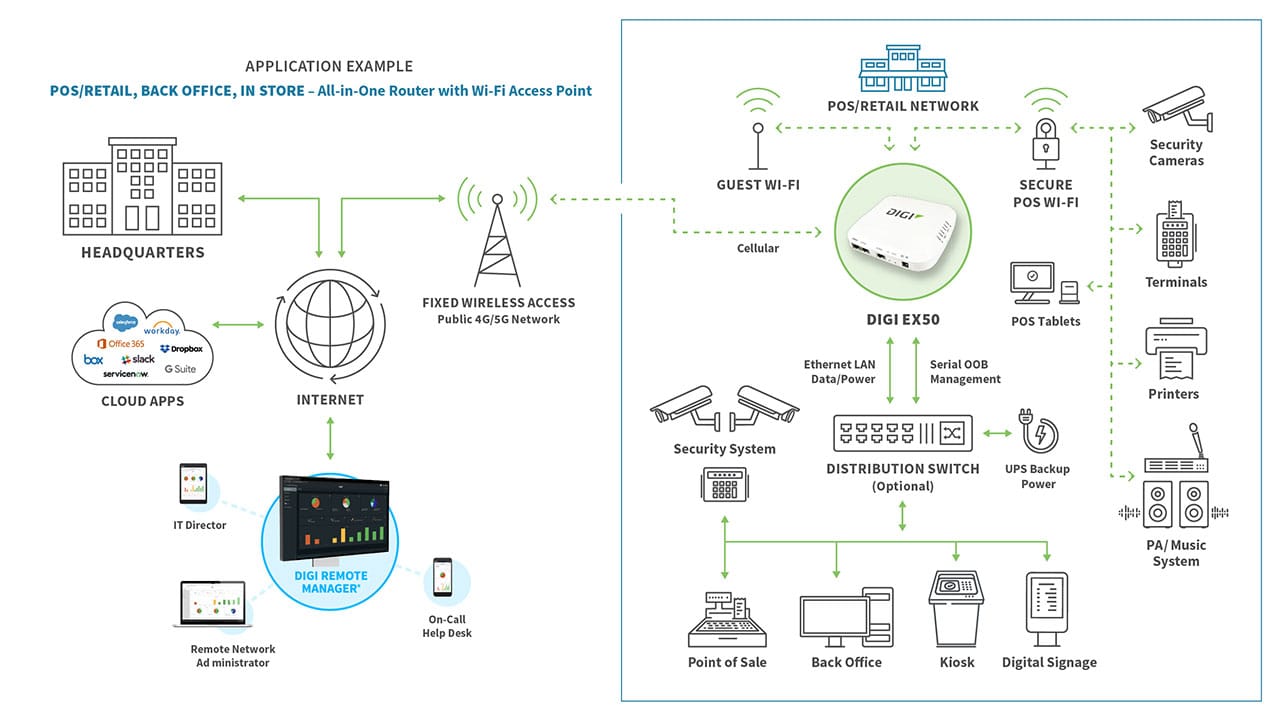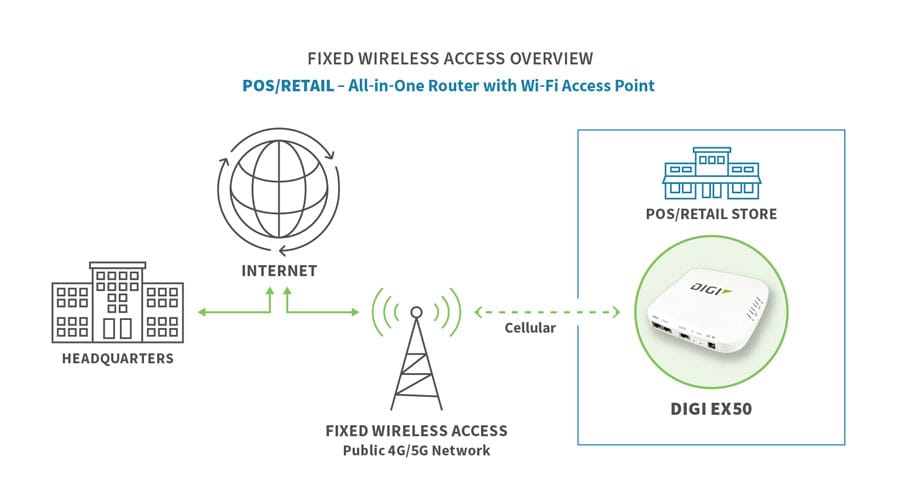
Internet access is not a one-size-fits-all proposition. Factors such as location, application needs, required service life, and cost all determine the optimal means of providing Internet access to people and businesses. Wired, wireless and even satellite connectivity are all options that have their advantages in different use cases. And with the advent of 5G, a system called fixed wireless access (FWA) is gaining in popularity.
Cost-Effective Option for Remote Deployments
Fixed wireless access (FWA) uses cellular as the primary network connection for a fixed location. Going wireless with FWA enables enterprises to eliminate cables and wired connections, replacing them with more flexible and less expensive cellular connectivity as the primary network connection.
FWA is a cost-effective alternative to both traditional wired access and satellite Internet. It can be deployed in rural areas where the investment in buried cable or even aboveground wire or fiber would be cost-prohibitive. It is also a cost-effective way to provide “last-mile” connectivity in remote areas.
With a satellite connection, the signal must travel from an Internet service provider’s transmitter on the ground to a satellite in space and then back down to the receiving antenna. Any response needs to follow the same lengthy course in reverse. The much shorter distances involved in fixed wireless, between a transmitting tower and a fixed wireless antenna, result in correspondingly lower latency, and a noticeably better user experience.

Fixed Wireless and 5G
Interest in fixed wireless access has grown significantly with the introduction of 5G. Using high-speed transmission, from 4G LTE to 5G Sub-6 and 5G millimeter-wave (mmWave), fixed wireless can deliver broadband service at speeds comparable to wired connections. It all depends on how much speed the application requires and what the customer is willing to pay for. Carriers may offer special data plans to incentivize customers to start with wireless or to switch from wired to wireless as their primary Internet connection.
Commercial Applications: Retail, Agriculture and More

FWA is an attractive alternative for both consumer and enterprise high-speed connectivity. It enables users, in effect, to consolidate their connections and go from having a satellite dish on the roof, plus cable or DSL for TV and Internet, and replace it all with a single 5G fixed wireless access router to receive both high-speed data and content over one high-speed data link.
Fixed wireless can be a good choice for a variety of business and industrial applications. For example, it can quickly connect a store or site to the Internet without having to pull wires — or wait for wired service to be installed — which often can take several months. This is especially true for smaller strip malls or buildings where there are not enough users to justify the expense of installing wired connections. It is also attractive for organizations that want to provide high-speed primary or back-up communications for enterprise main, branch and home offices.
Why Fixed Wireless?
Day 1 Connectivity
Open your business now without having to wait for getting wired service to be installed
Fiber-like Internet
With speeds of 50 Mbps to 1 Gbps and more, 5G FWA is comparable to current wired Internet speeds
Wireless Resiliency
5G FWA with 4G/5G dual-connectivity prevents downtime, as there are no wires that can fail
Digi Solutions for Fixed Wireless Access
Digi offers a wide range of connectivity solutions for organizations considering FWA as an alternative or augmentation to traditional wired connections. Specifically, the Digi EX50 5G Cellular Router is an excellent choice for enterprises and indoor industrial use cases alike.
With its capacity for high-speed 5G and 4G LTE, the high-performance, enterprise-grade Digi EX50 5G offers the bandwidth needed to provide connectivity to retail shopping malls, large work sites, or any users who need the high-speed connectivity that is only possible with 5G.
Additionally, Digi EX50 is a complete solution, with sophisticated software to optimize performance and reliability, as well as integrated remote device configuration, management and security tools, with Digi Remote Manager® and the Digi TrustFence® security framework. Contact us to evaluate this solution for your enterprise connectivity.